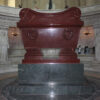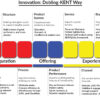
Equipment is not a choice in medicine, it’s a necessity. From the humble stethoscope to the latest robotic surgery platforms, medical care’s equipment not only defines the physician’s productivity, but the quality of patients’ outcomes. Paraphernalia, be it MRI machines, PET-CT machines, or surgical robots, provides diagnostic acumen and therapeutic precision its strength. Equipment in itself is not progress guarantee nor status symbol; it needs to be complemented by organizational objectives, financial situation, and the population demographics that it is serving.
Just as Oliver Wendell Holmes famously proclaimed: “The great thing in the world is not so much where we stand, as in what direction we are moving.” In healthcare, it is going in the correct direction through the right choice of technology for the right context, rather than purchasing the most expensive machinery to prove prestige.
Equipment as Enablement, Not as Ornament
Equipment can be the edge of revolution when combined with vision. The legendary example from India is the Aravind Eye Care System. Embracing cost-efficient,-scalable world-class technology, cataract surgery was revolutionized by Aravind at only a tenth of international rates for millions of operations. Their strategy demonstrates how equipment, when combined with clinical necessity and affordability of patients, can multiply effects.
At the other end of the spectrum, Johns Hopkins Hospital and other global leaders incorporate state-of-the-art robotic technology to perform minimally invasive surgery. Robots enable surgeons to reach problematic areas of anatomy with unmatched precision, to reduce blood loss, hospital stay, and recovery period. Here, technology is diagnostic tool as much as it is therapeutic partner.
The lesson is clear: technology enables care when connected to goals centered on patients, not organizational pride.
Indian Reality: Between Need and Feasibility
Indian healthcare is full of paradoxes. Tertiary-care units in urban cities have ultra-modern gadgets, from linear accelerators for oncology to integrated operating theatres. But not infrequently, district hospitals are left with non-functional or idle machines. These “white elephants” are typically obtained from government grants or donations and are found idle due to lack of trained operators, non-availability of maintenance contracts, or inappropriate priority.
The Lancet Global Health published in 2020 that indicated nearly 40% of medical devices in middle-income and low-income countries are underutilized because of inadequate preparation, unavailability of spare parts, or limited human resources. It is again a reflection that technology without preparation of health ecosystem is wasted investment.
Pros of Medical Paraphernalia
Enhanced Diagnostic Precision – Advanced imaging modalities such as MRI, PET-CT, and ultrasound allow for earlier detection and more accurate staging of diseases.
Therapeutic Effectiveness – Medical devices like robotic surgical systems, laser platforms, and endoscopes enable minimally invasive surgery, minimizing recovery times and hospital stays.
Scalability of Care – Point-of-care diagnostic devices and telemedicine kits can be used to expand care to under-served regions.
Global Benchmarking – State-of-the-art equipment use puts healthcare delivery at par with global standards and promotes medical tourism and research collaboration.
Cons and Challenges
High Cost of Capital – Most of the equipment is worth crores of rupees and thus is unaffordable for small hospitals.
Maintenance Burden – Equipment will typically require annual maintenance contracts, costly spare parts, and highly trained engineers, that may not be locally obtainable.
Human Resource Gap – Equipment is of value only to the extent of human resources that can operate it. Skilled radiographers, biomedical engineers, and expert surgeons are typically in short supply outside metros.
Risk of Misalignment – Hospitals risk purchasing machines that don’t fit the needs of their patient population if they don’t thoroughly assess their needs. This results in need-based purchases becoming status-based purchases.
International Lessons
Internationally, the equilibrium of affordability and refinement provides divergent lessons:
In the NHS of Britain, strict health technology assessment (HTA) procedures ensure that only when the cost-effectiveness of new paraphernalia is proven is it implemented.
In Japan, where healthcare needs are dictated by population aging, robotic surgery and home-monitoring devices come first to reduce the hospital burden.
In Africa, such initiatives as low-cost portable ultrasound machines transformed maternal and child health by showing that sometimes less-costly smaller machines prove to be more efficient than flashy machines.
India’s healthcare sector can learn from these diversified models: matching equipment orders to population-based priorities—maternal care, infectious diseases, cancer, or geriatric care—rather than placing generic orders.
Business Takeaway: Buy Purpose, Not Positionality
Healthcare leaders must resist the temptation to confuse equipment for prestige. Scalable, sustainable strategy depends on:
Purpose-driven Purchases – Buy equipment only when it supports clinical priorities and population needs.
Staff Education – The machines are no better than the individuals running them; spend money on educating them as much as the machine.
Maintenance Budgeting – All procurements must account for servicing, upgrading, and consumable costs.
Patient Affordability – The financial sustainability of a hospital is not based on how many machines it has, but rather how many patients it can affordably sustain.
Just like Bill Gates has stated once: “The advance of technology is based on making it fit in so that you don’t really even notice it, so it’s part of everyday life.” That is also true for healthcare—devices need to be integrated seamlessly into clinical workflows, not be a useless display piece.
Conclusion: Empowering Tools, Not Distractions
Medical equipment is double-edged. Used wisely, it transforms care delivery, enhances precision, and instils pride in attendant and client alike. Used unwisely, it congests hospital wards with idl equipment and diverts financial resources. The Indian example—of how Aravind Eye Care shows us that it is possible to scale and to do so affordably, and of how district hospitals remind us of white elephants—bows to the principle of balance. Across the globe, from Africa’s portable ultrasounds to Johns Hopkins’ robots, the mantra is the same: buy for use rather than prestige. More significantly, healthcare is all about people, not paraphernalia. The true test of equipment is not whether it is advanced, but whether it facilitates care that is affordable, accessible, and attuned to the needs of the society it is deployed to serve.
Dr. Prahlada N.B
MBBS (JJMMC), MS (PGIMER, Chandigarh).
MBA in Healthcare & Hospital Management (BITS, Pilani),
Postgraduate Certificate in Technology Leadership and Innovation (MIT, USA)
Executive Programme in Strategic Management (IIM, Lucknow)
Senior Management Programme in Healthcare Management (IIM, Kozhikode)
Advanced Certificate in AI for Digital Health and Imaging Program (IISc, Bengaluru).
Senior Professor and former Head,
Department of ENT-Head & Neck Surgery, Skull Base Surgery, Cochlear Implant Surgery.
Basaveshwara Medical College & Hospital, Chitradurga, Karnataka, India.
My Vision: I don’t want to be a genius. I want to be a person with a bundle of experience.
My Mission: Help others achieve their life’s objectives in my presence or absence!
My Values: Creating value for others.
Leave a reply
















Dear Dr. Prahlada N.B Sir,
Your thoughts on medical equipment in healthcare are truly enlightening. You've emphasized the need for balance in investing in technology and ensuring effective use. Key takeaways include :
– *The Double-Edged Nature of Medical Equipment*:
– *Enhanced Diagnostic Precision*: Advanced equipment like MRI machines and robotic surgery platforms improve diagnostic accuracy and therapeutic effectiveness.
– *Challenges and Limitations*: High costs and the need for skilled operators can limit accessibility.
– *Best Practices for Healthcare Leaders*:
– *Purpose-Driven Purchases*: Prioritize equipment supporting clinical priorities and population needs.
– *Staff Education*: Invest in training for effective equipment use.
– *Maintenance Budgeting*: Account for servicing, upgrading, and consumable costs.
– *Patient Affordability*: Focus on affordable care, not just accumulating equipment.
Your approach to people-centric healthcare is inspiring, highlighting the importance of human capital, trust, empathy, and effective communication in patient outcomes. Your impressive 29-year career as an ENT specialist showcases expertise in advanced endoscopic sinus surgery, ear and skull base surgery, and head and neck cancer and reconstructive surgery.
Thank you for sharing your valuable insights. Your dedication to healthcare is a testament to your commitment to creating value for others.
Reply